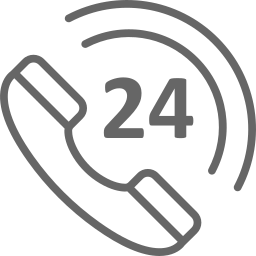Acute poisoning is among the major accidents in children and is a significant public health issue. Among incidents, poisoning is accounted for about 7 percent of all cases in children under the age of 5, and causes about 2 percent of children's deaths in developed countries, leading to 3,000 deaths in countries around the world each year. In the present sense of childhood incidents, acute poisoning plays a significant role based on the frequency of occurrence in emergency treatment facilities, the probability of sequelae, and the subsequent cost of health care. Over the past few years, the variety of pharmaceutical and cleansing materials with high poisonous strength has increased due to massive industrialization. Without proper supervision, these items are marketed, exposing children to increased risk of interaction with any of these chemicals. Nonetheless, there is a lack of research aimed at defining the epidemiological features of such events, and which may subsidize preventive methods for reducing child mortality and morbidity. Significant strategies are required characterizes the profile of accidental exposure in children, the present study aims to contribute to filling the void.
During my clinical placement, I was being posted in a child ward. I saw a repeated admission of children coming with the cases of the intoxication or poisoning. the children were from the Aboriginal community. I was surprised as to how the children were getting exposed to these chemicals. I saw a biased treatment of the nursing staff with these children. The nursing staff was not treating the children according to the nursing standards. The staff was rude and was not adhering to the personalized care needs of these children. Later I realized the discrimination was because of the community they belonged to. I was unable to understand the behavior if biasness towards the children, as the standard of nursing and code of conduct dictates to work independently of our own cultural values and beliefs. All patients have to be treated equally without any discrimination based on age or gender. Cultural knowledge, weak leadership and inadequate interpersonal communication was lacking in the situation, while all three elements are essential for the delivery of quality and patient-centered care services.
The foundation of care consists of a detailed assessment of the exposures to poisoning, careful examination of the individual, and the implementation of specific supporting care as suggested. Meticulous attention to detail in both regular and intensive supportive care is the most critical part of treating a child with possible toxicity damage. If a toxic exposure is reported, initial treatment focuses on stabilizing the condition of the patient using resuscitation strategies, ABCs (airway, breathing, and circulation), and maintaining immediate intravenous line. The poisoned patient also portrays an acute-onset crisis with a wide range of pathophysiology of the multiple organ system. All other issues will be replaced by exposure to the potentially critical or evolving problems related to appropriateness and safety of the heart and circulation. Supporting treatment involves monitoring to ensure airway safety, especially in the received infant, maintenance of sufficient oxygenation and ventilation, correction of any hypotension or hypertension, treatment of electrolyte disorders, monitoring of dysrhythmias, rhabdomyolysis, and knowledge of current health issues and drugs.
For poisoning cases, letters D, E, and F can extend the basic notation stabilization to include evaluation of injury, medications, disinfection, electrocardiogram ( ECG), and temperature. They are a primary concern in determining and handling environmental exposures. The measurement of illness will require a brief neurological test, such as consciousness level, pupil dilation, and reaction; drug treatment is the possible therapeutic use of products such as oxygen, dextrose, and naloxone. In every individual with a changed state of mind or tiredness, or for any individual subjected to substances that may induce low blood sugar, a glucose concentrations bedside examination is recommended. Hypoglycemia is among the side effects of harmful conditions that are most easily identified and curable. Techniques of cleanup are used for immediate corneal and dermal cleanup, and for digestive disinfection choices. ECG is a valuable tool for prognostic and predictive indications, particularly with substances believed to trigger identifiable changes in ECGs such as proton pump inhibitors, dopamine agonists, and antidysrhythmias. Letter Denote initiatives aimed at controlling the temperature to promote normothermia and to implement emerging hyperthermic cooling strategies.
Cultural safety can be defined as a safe and comfortable environment for humans. An area where individuals are not faced with violence, denying their identities, as to who they are and what they really want. It's all about common awareness, shared value, mutual reverence, and perceptions of educating, operating, and working together along with self-esteem and integrity. In the case of Aboriginal people, cultural needs is the cultural resilience. Another requirement is the cultural competency of those associated with Aboriginal groups. Communication, acknowledgment, appreciation, and acceptance, however, are also the features that shape sustain social stability.
The cohort comprised 767,119 children, including 28,528 Indigenous children (3.7 percent). Aboriginal children had almost three times more hospitalized poisoning levels (1.34%) compared to non - indigenous children (0.41%). The rate of poisoning occurred at ages 2–3. Increased probabilities of poisoning hospitalization for indigenous and non - indigenous kids were correlated with male gender, low socioeconomic status, and geographic isolation, but correlations with deprivation and isolation were highly significant only for non - indigenous children. The majority of poisonings (83 percent) were initiated by pharmaceutical agents.
In human and animal research, cardiac injury was associated with poisoning, and cardiovascular and neovascularization injuries were confirmed to be hypoxic oxidative stress-induced (reoxygenation) that was related to toxic exposure. Hypoxia-related damage to the central nervous system ( CNS) can lead to blood insufficiency, and the impact of increased doses of chemicals on muscle cells can lead to hypotension and ultimately death.
Remember, at the center of any academic work, lies clarity and evidence. Should you need further assistance, do look up to our Nursing Assignment Help
Explore More Topics
Pathophysiology Assignment Help for Top Grades
Pathophysiology Disease Assessment Sample: A Pocket-Friendly Tool For You

Get 24x7 instant assistance whenever you need.

Get affordable prices for your every assignment.

Assure you to deliver the assignment before the deadline

Get Plagiarism and AI content free Assignment

Get direct communication with experts immediately.
Secure Your Assignments
Just $10
Pay the rest on delivery*

It's Time To Find The Right Expert to Prepare Your Assignment!
Do not let assignment submission deadlines stress you out. Explore our professional assignment writing services with competitive rates today!
Secure Your Assignment!